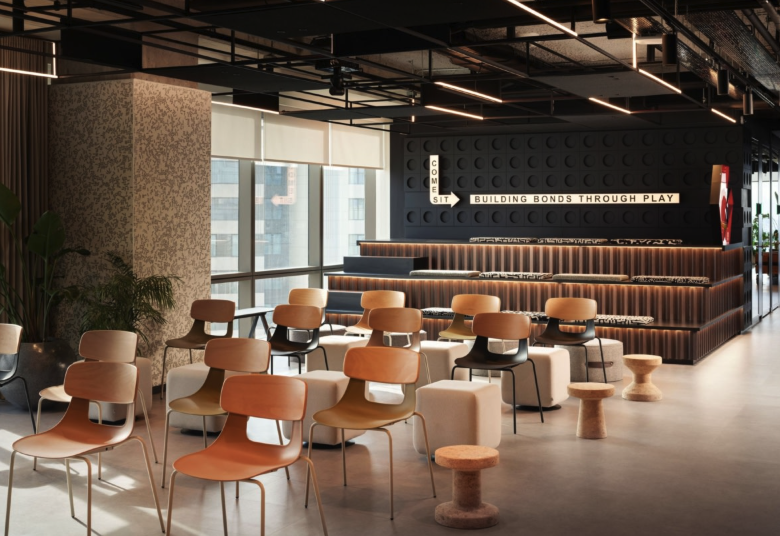How a Relocation Project Can Become a Cultural Transformation Lever
Discover how a to realize a stacking plan that allows a real cultural and organizational change in your company.
In most companies, a relocation is seen as a logistical constraint or an economic decision. However, it's also a rare opportunity to deeply evolve company culture. When well managed, a relocation project can catalyze new ways of working, strengthen cohesion, or even materialize a company's values. But it must be approached as a global transformation project – not just a real estate one.
Relocation, a revealer (and accelerator) of transformation
Changing workplaces is much more than changing addresses. A space change disrupts habits: it questions how employees work, interact, spend their time, or access information. It's therefore a key moment to question existing practices and initiate new behaviors aligned with the company's strategic vision.
A well-executed relocation project becomes a cultural transformation accelerator. It makes visible what wasn't, reveals resistance, but also the deep aspirations of teams. This type of transition allows opening strategic discussions about how to work together, embodying values that were previously intangible, or strengthening alignment between discourse and reality.
Concrete examples of cultural transformations driven by relocation:

These choices, much more than aesthetic or practical, translate a desire for transformation.
Integrating company culture from the design phase
The key to success: thinking of spaces as a tool serving a cultural ambition. This requires crossing several dimensions from the early project phase.
Before even drawing plans, it's necessary to question the role you want the future workplace to play:
A thorough cultural diagnosis is essential to bring out these answers. This can combine several approaches: internal surveys, qualitative interviews, field observations, and especially collaborative workshops, allowing to cross the perceptions of different company layers.
This diagnosis should not be limited to an analysis of functional needs (number of workstations, room typologies...). It must deeply explore practices, routines, irritants, and cultural aspirations. This preparatory work guides design toward relevant choices, aligned with the company project.
Space as a narrative support
Each spatial choice (layout, materials, signage, color usage, light management, noise levels...) carries meaning. The work environment becomes a staging of company values, a silent but powerful storytelling vector.
Let's take a few examples:
Space thus sends implicit messages that influence behaviors: what is allowed, what is valued, what is expected. It becomes a tool for alignment between management intention and the reality experienced by teams.
Involving employees: a sine qua non condition
A suffered relocation is often perceived as a loss of bearings, or even as a constraint imposed from above. Conversely, a project where employees are actors of transformation promotes appropriation, engagement, and even collective pride.
Involvement is not decreed, it's built over time through several levers:
Integrating collaborative tools like Stackfit
To make these co-construction workshops more concrete and interactive, it can be extremely useful to use an interactive stacking tool like Stackfit.
Stackfit allows you to visualize in real-time the distribution of teams across future floors, test different implantation scenarios, and simulate flows or interactions. This approach facilitates collective decision-making by making the project tangible for everyone, including non-experts.
The tool allows translating organizational issues into concrete spatialization, making trade-offs more transparent and understandable. In workshops, it promotes alignment between HR, IT, real estate teams, and end users.
Thus, co-design is not limited to symbolic listening: it becomes an active method of collaborative design, supported by concrete tools serving collective intelligence.
Measuring cultural impact post-relocation
Transformation doesn't stop at move-in. It's essential to measure the evolution of behaviors and perceptions over time. This allows validating choices made, but also adjusting certain practices or spaces if needed.
Among the indicators to monitor:
Some tools even allow collecting continuous qualitative feedback, through QR codes in spaces or internal applications.
This post-occupancy observation phase is often neglected, but it's crucial for anchoring transformation sustainably, demonstrating its value, and continuing to evolve uses.
Conclusion: a real estate project, a culture project
A relocation project should never be reduced to a m² or cost reduction issue. It's a tremendous opportunity to reconnect real estate with company strategy, provided it's approached as a full-fledged cultural project.
The places we inhabit deeply influence our behaviors, relationships, and way of thinking. By creating work environments that embody company values, stimulate good collective reflexes, and promote adhesion, we act directly on organizational transformation.
For real estate, HR, or transformation departments, it's a unique opportunity to play a structuring role, by breaking down approaches and building spaces that truly carry meaning.
